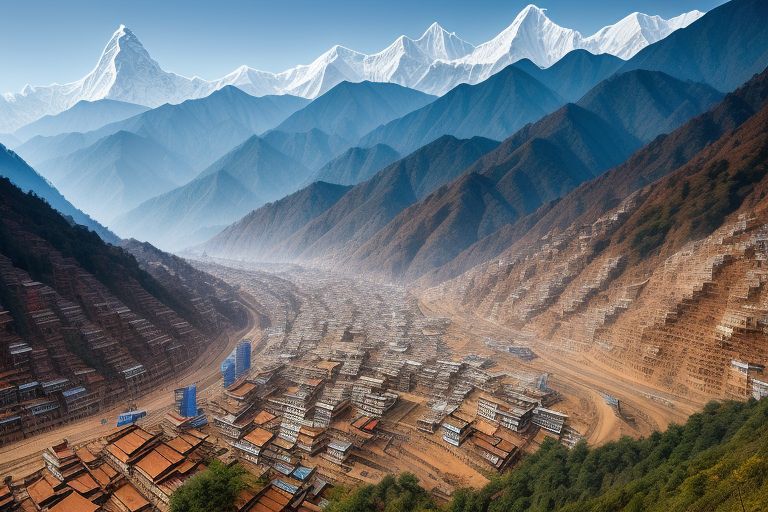Today, the government has unveiled a set of ambitious programs in an attempt to improve the infrastructure of Nepal and, therefore, encourage the boost of the country’s economy in transportation and energy sectors.
The announcement has been made by the Ministry of Physical Infrastructure and Transport for new construction of highways, railways, and hydropower projects that are promising to change Nepal’s geographical map and economy.
Out of these projects, the most ambitious and still under construction project is the East-West Electric Railway which envisages establishment of an electric railway from east to west of this Nepalese kingdom.
This project which covers a forecasted length of over 945 kilometers is aimed at transforming transportations within the country making distances between city centres and rural areas more easily manageable than before.
Besides railway the government has given nod for new highway projects including the popular Kathmandu-Terai Fast Track. This expressway with a total length of 76 kilometers is going to be constructed with a view to shortening the travelling distance between Kathmandu and the southern plains which play an important role in trading and business activities. The construction which has been fraught by time challenges in the past is now set for fresh momentum with the expected completion in the next five years at most.
The Premier also announced the start on several hydropower projects, hence boosting the energy sector as well. Among all these is the Upper Tamakoshi Hydroelectric Project that is still under construction and once completed it will generate 456MW in the national grid. This particular project alone has capability to reduce Nepal’s dependency on imported electricity to a large extent and may transform Nepal into an electricity exporting country in South Asian region.
The environment has been given priority in these projects mainly because the government has claimed to support sustainable development. Eco-friendly strategies such as provision of wildlife connection and trees planting have been incorporated to the project plan.
There are different reactions towards the announcement that has been made. Both economists and Nepalese business community have endorsed the initiatives by describing them as potential measures towards economic Liberalization and integration of the country with the neighboring nations. According to them, development of infrastructure will help to attract foreign investors and increase tourism, and will create many new jobs with diverse specialization.
Nevertheless, there are concerns from the environmental sector and fromlocals on these concerns on ecological and social losses once larger projects are conducted. They have demanded the improvement of the EIAs regarding disclosure and an inclusion of the community participation at the planning stages and the implementation stages.
The government has stated that all those risks will be mitigated by independent environmental and social impact assessments and constant communication with the affected people. It has been stated many times by the officials that these projects will be accomplished in the most friendly way towards the Nepali nature and culture.
That’s why the financing of such large-scaled projects is assumed to be provided by the governmental, foreign credits, and local private investments. The government has also started the process of engaging international financial institutions, and the likely bilateral counterparts for the mobilization of the needed funding.
That is why these projects are considered vital for Nepal’s development as it steps into this process furthering its goal of graduating from the least developed country status and thus becoming a middle-income country in the coming decades. The initiatives are planned to positively impact the country’s internal connectivity and economic development and improve the position of Nepal in the regional integration of the countries.
Through these statements, the Nepalese government indicated its commitment to getting over geographical hindrances and use the country’s geographical advantage of being situated in between two big economies: India and China. As these projects get into the implementation phase, the emphasis will shift towards the capability of Nepal in translating such large plans to reality while taking into consideration development requirements and harmony with the environment and social setting.


